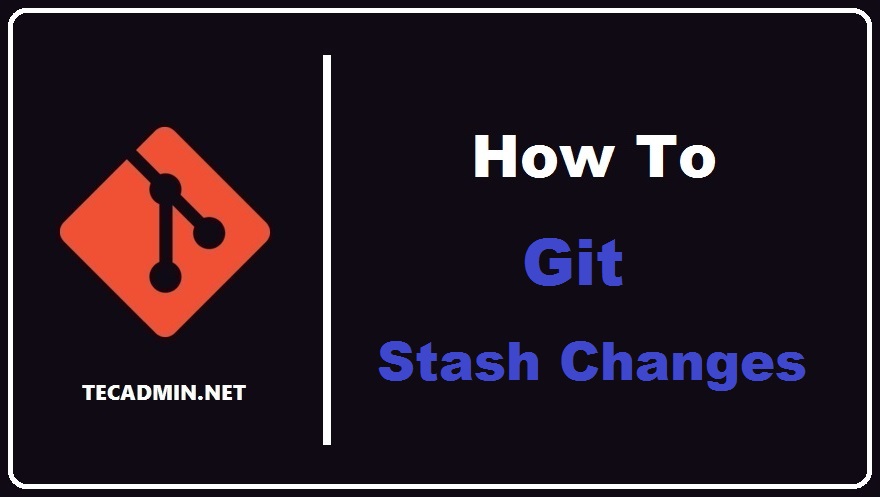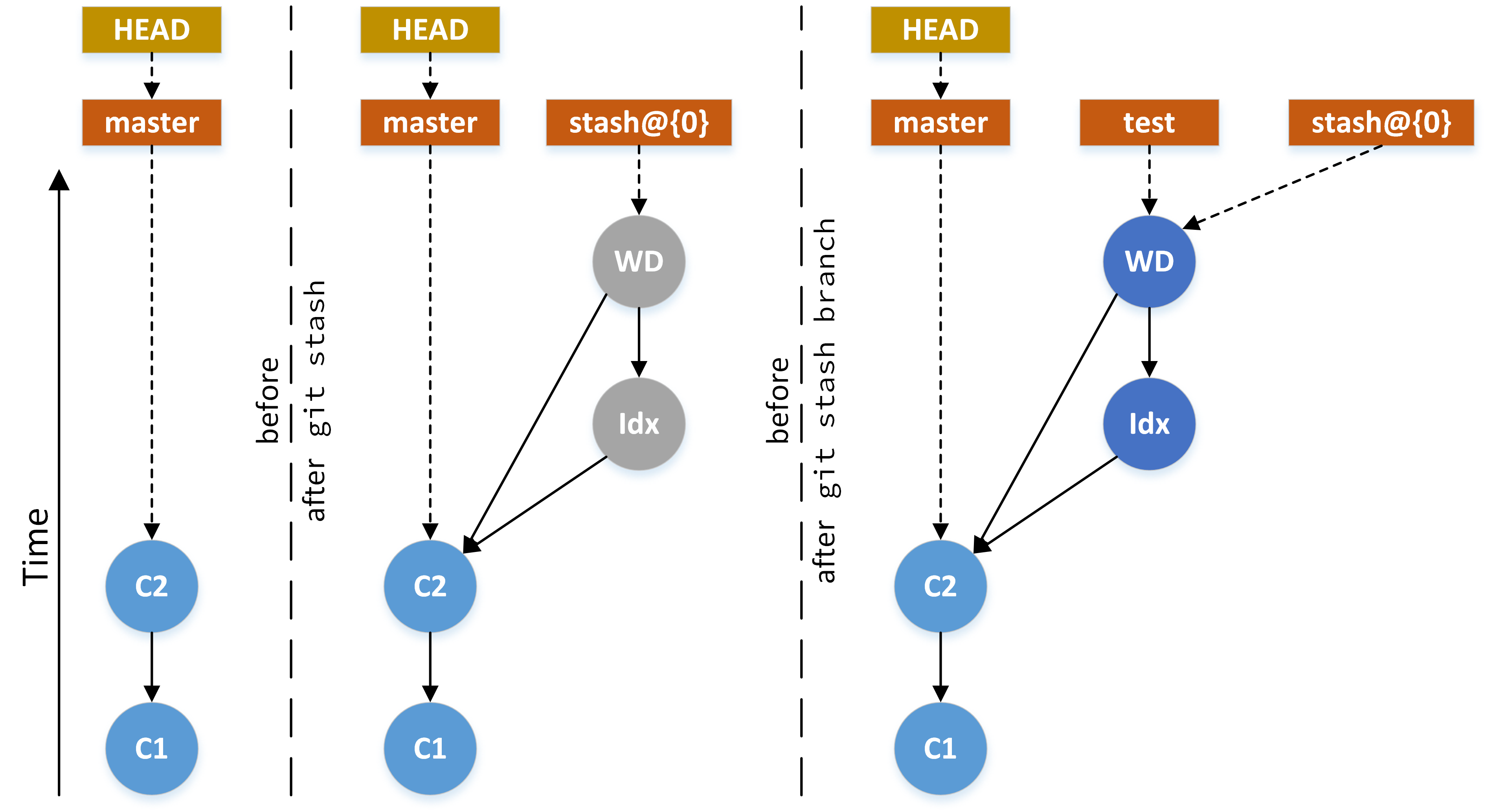
These are the basic commands when using stashes day-to-day.
Git stash changes download#
If you do have some they’ll be listed like this: : On develop: product bundle download template The list option shows all of the existing stashes, if there are any. Git stash isn’t a replacement for smart use of branches (we don’t want to start a new feature in a main branch and then stash it away until you’re ready to apply it) but can be a life saver if we find ourselves needing to quickly shifting gears to another task, bug report, or request.įire up a current project to try out git stash.įirst, let’s check if we have any existing stashes. Git stash command is used to store changes that you dont want to commit now and take you to the last commit of the branch. The command saves your local modifications away and reverts the working directory to match the HEAD commit. Invoking git stash encodes any changes to tracked files as two new commits in your DAG: one for unstaged changes, and one for changes staged in the index. Use git stash when you want to record the current state of the working directory and the index, but want to go back to a clean working directory. The easiest way to do this is with git-stash, a useful git command that allows you to store the modifications you’ve made in our working directory and go back to a clean working directory.įrom the Git Manual (run git stash -help to see it on your own): I needed to quickly save - or stash away - my changes and then apply them back to the repository later, after my other work was complete.
Some of these changes may also be staged in the index.In the Up and Runningn with Git course, I was in the middle of making some changes to the homepage of our sample site when a another change request came in. Note: You can create as many stashes as you want or need there is no limit like there is with the standard clipboard of your operating system. If you’d rather save an individual file instead, enter its name: git stash push -m 'modifies the CSS' css/agency.css. How git stash encodes your worktree and index as commits:īefore stashing, your worktree may contain changes to tracked files, untracked files, and ignored files. By default, git stash push will save all changes in your working copy.

you specified the -include-untracked or -all option when invoked git stash.


Git stash changes how to#
a new commit to store the tracked files that were in your working copy when you ran git stash Git Tags Git Stash Copy changes with cherry-pick 15 Create a Branch Git branches arent much more than a small reference that keeps an exact history of commits, so they are very cheap to create. How to Use Git Stash Command to Temporarily Save Your Changes Okay, so picture this scenario.953ddde WIP on main: 5002d47 our new homepage |\ \ | | * 24b35a1 untracked files on main: 5002d47 our new homepage | * 7023dd4 index on main: 5002d47 our new homepage |/ * 5002d47 our new homepageĭepending on what you stashed, a single git stash operation creates either two or three new commits. Instead, you can use git stash branch to create a new branch to apply your stashed changes *. If the changes on your branch diverge from the changes in your stash, you may run into conflicts when popping or applying your stash. There is no explicit "abort" command, but hitting CTRL-C(SIGINT) will abort the stash process. Quit (any hunks that have already been selected will be stashed)
Git stash changes full#
You can hit ? for a full list of hunk commands.


 0 kommentar(er)
0 kommentar(er)
